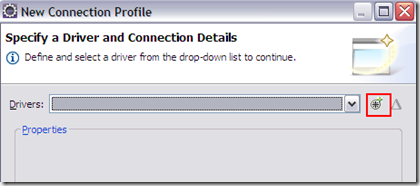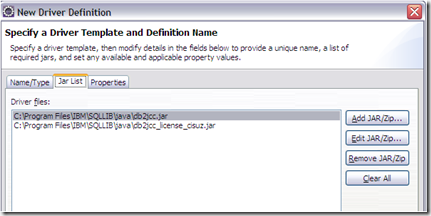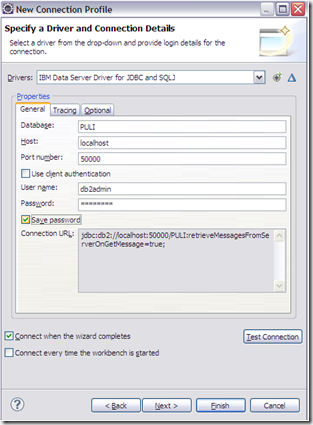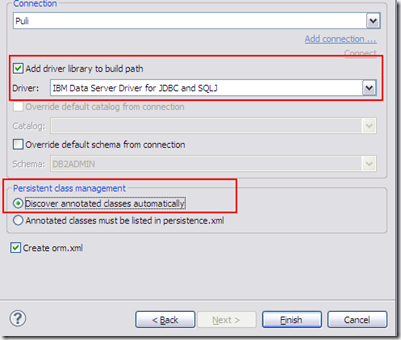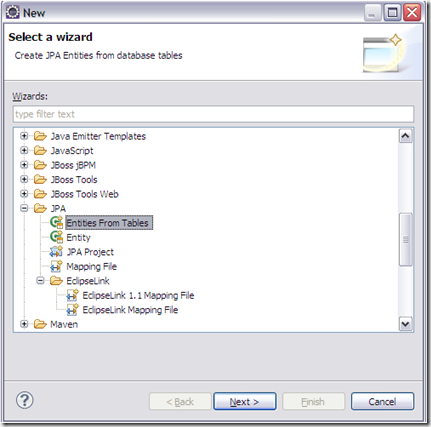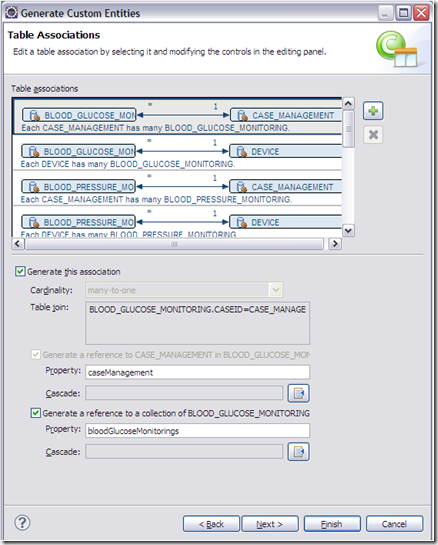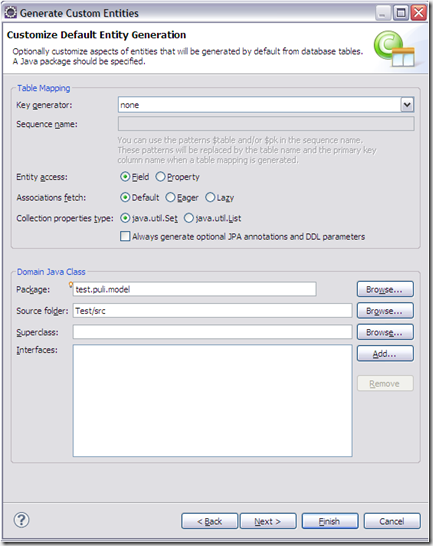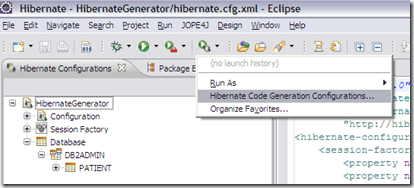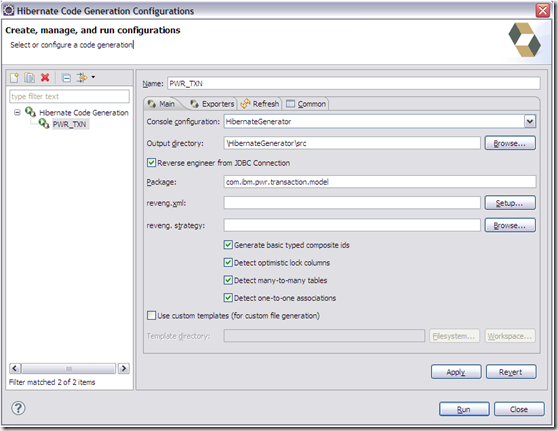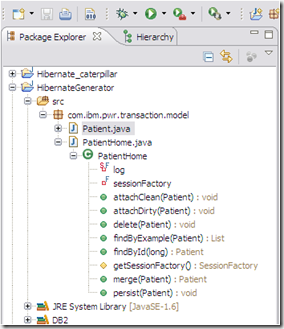ZRM為定義在 app/models 下的data model,提供了簡單的HTTP RESTful的實作。只要在app/models目錄下,使用JSON定義 entity model,然後在app/resources/ 目錄下,建立一行groovy程式,即可對該model進行CRUD的RESTful操作。實際順序如下
- 在應用程式根目錄的 app/models/ 子目錄,建立一個json檔來描述要model的entity的schema,如下
{
"fields":{
"firstname":{"type":"string"},
"birthday":{"type":"date"}
}
} - 在 config/ivy.xml中,加下這一行,以include zero resource的library
<dependency name="zero.resource" org="zero" rev="[1.1.0.2, 2.0.0.0["/> - 在config/zero.config,加入下列內容。用/config/resource/dbKey設定ZRM要用那個db config,然後用/config/db/xxx 設定該db config的內容
/config/db/test = {
"class" : "com.ibm.db2.jcc.DB2SimpleDataSource",
"driverType" : 4,
"serverName" : "localhost",
"portNumber" : 50000,
"databaseName" : "JPATEST",
"user" : "db2admin",
"password" : "password"
}
/config/resource/dbKey = "test" - 複製database driver檔案到 lib/目錄下,並 resolve
- 關閉eclipse,開啟CMD程式,變更路徑到應用程式根目錄,執行命令:(一定要關閉eclipse,否則無法執行)
zero model sync - 完成後,可發現資料庫已建立一個新的表格: persons
- 打開browser,執行 POST http://server:port/resources/persons 並將一筆person的資料以JSON格式傳入,執行完成後,即可發現新建的persons 表格已建立該筆資料
{
“firstname”:”Janie”,
“birthday”:”1973-12-04”
}












